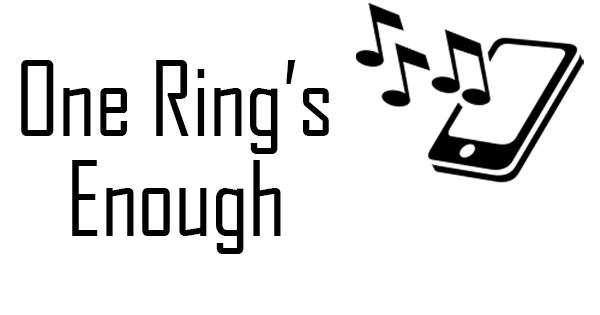
Aren’t you just the slightest bit intrigued after seeing today’s title? You married guys reading this probably have your own ideas. After all, you’re familiar with the three rings of marriage, right? The engagement ring, the wedding ring, and the suffer-ing? Rimshot! I’ll be here all night. The graphic in “One Ring’s Enough” is the giveaway in this case. Recently, your cell phone has been ground zero in the war on illegal telemarketing. You say you’ve registered all of your numbers on the National Do Not Call Registry? Well, unfortunately that has proven to be practically useless. I know that I’ve received calls from angry people who have accepted calls from my business number and argued with me that I was the one who called them and hung up. Eventually they’re satisfied that I didn’t, but stolen cell phone numbers that are local to your home area are among the latest tactics that these scammers are using. The newest invasion is the “one ring hangup”. Learn why you should never return one of these calls.
Caller ID used to be considered a luxury. I remember when it first came out. I marveled at how much better life would be with it. Imagine knowing who was calling before answering the phone. The height of technology before that was letting the answering machine get the call, and then deciding what to do when you heard who was on the line. Of course, in this day and age every cell phone has Caller ID, and most landlines do as well. We’ve come a long way baby! Because of this, criminals have been able to exploit yet another modern convenience that we all enjoy. The latest scam is to call a “target” and let the phone ring once, maybe twice, before hanging up. The hope is that the recipient of the call will call the number back to see who had called them. While the number that appears on the recipient’s phone appears to be from an American number, the truth is that the number is from an international pay-per-call number. If you call this number back, the longer you talk, the larger the wireless bill will be. There are likely fees for connecting, per minute rates, and these calls could appear on your bill as premium services.
Armed with the knowledge that these phony calls are becoming rampant, you’re probably wondering how you can protect yourself. Well, the first thing I do when receiving a call from a number I don’t recognize is type the phone number into a search engine and see what results pop up. If the number I’ve searched is a known scammer, I’ll then block the number on my iPhone so I don’t have to worry about it. One number down, ten million to go! Read “Won’t Get Fooled Again” for the step-by-step process I use daily, it seems. Next, if you don’t make international calls, you can have them blocked automatically by your phone service provider. Lastly, and I know I sound like a broken record, just use common sense. If something doesn’t “feel right” it probably isn’t. Also, it doesn’t hurt to wait and see if the number in question calls you back. If a call is important, they’ll call back, and most likely, leave a message.
The “one ring hangup” is serious enough that the Better Business Bureau has released warnings about it. They don’t always get involved in matters such as these, so it’s important to take notice. The world has gone wireless, so it stands to reason that these attacks will only continue to evolve and increase. In this case, when it comes to losing your hard earned money, “One Ring’s Enough!”
